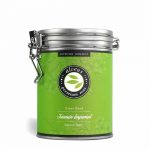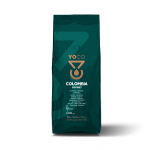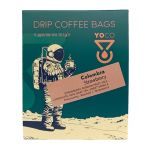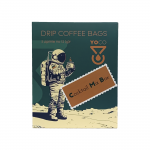Entering the world of home espresso-making can feel complicated with the abundance of tools and gadgets available. For beginners, it’s often hard to know what’s truly important and what can be left for later. While some equipment is indispensable for ensuring good espresso, others can be helpful but aren’t essential. This guide looks at the key tools that can enhance your espresso-making experience and helps you sort out what you really need from the start.
Starting with the Basics: The Coffee Grinder
A coffee grinder is arguably the most critical piece of equipment for making espresso at home. Pre-ground coffee starts losing its flavor almost immediately, leading to a stale and uneven extraction. A good grinder allows you to control the size of your grind, ensuring consistency in every shot. If you’re using pre-ground coffee or don’t have a grinder, you’ll struggle to achieve the full potential of your espresso, often ending up with subpar results. This makes a grinder non-negotiable when it comes to brewing high-quality espresso.
Don’t Forget a Scale: Why Precision Matters
One of the often-overlooked but highly useful tools is a precision scale. It allows you to measure both the amount of coffee and the amount of water, which is crucial for getting the right extraction. Even slight variations in these measurements can drastically change the flavor of your espresso. A scale helps you fine-tune your process, and for beginners, it’s a key tool for learning what works and what doesn’t. While you can technically get by without one, having a scale makes it much easier to achieve a consistent and balanced shot.
Frothing Milk: Pitchers and Thermometers
If you enjoy milk-based drinks like lattes or cappuccinos, a milk frothing pitcher is a must-have. The pitcher helps you achieve the right texture and foam by allowing for proper control during the steaming process. However, if you’re only making straight espresso, this might be unnecessary.
Alongside the pitcher, a milk thermometer can also be handy, especially if you’re just starting out with milk frothing. Overheated milk can ruin the texture and flavor, and a thermometer helps you avoid this by ensuring that the milk stays within the ideal temperature range. With more experience, you might learn to gauge the temperature by feel, but in the beginning, the thermometer is a helpful tool.
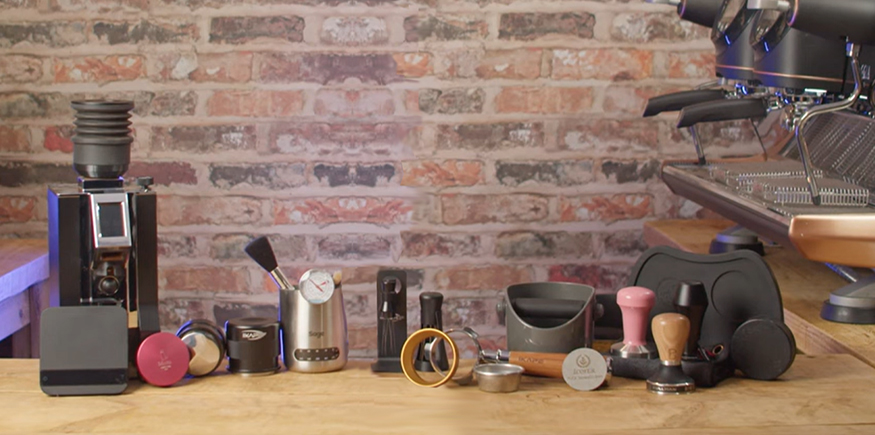
The Tamper: Ensuring Even Extraction
Tamping the coffee evenly in the portafilter is essential for balanced extraction, and many entry-level machines come with plastic tampers that don’t do the job properly. A good tamper ensures that the coffee grounds are compressed evenly, which allows the water to flow through the coffee more consistently during extraction. Some tampers are calibrated to apply a specific amount of pressure, which can further help with maintaining uniformity across different brews. A solid tamper is a simple upgrade that can make a noticeable difference.
Workspace Maintenance: Knock Boxes and Tamping Mats
Maintaining a clean and organized workspace is another factor in making your espresso experience more enjoyable. A knock box provides a convenient way to dispose of spent coffee grounds without making a mess. It’s not strictly necessary, but it’s a useful addition for those who make espresso regularly and want to streamline their cleanup.
Tamping mats, on the other hand, protect your countertops from damage when you’re tamping your coffee. These mats provide a sturdy, non-slip surface for tamping and can help avoid scratches on your work surface. While not essential, a tamping mat is a good way to keep your workspace tidy and damage-free.
WDT Tools and Bottomless Portafilters: Advanced Techniques
For those looking to improve the consistency of their shots, especially if using an entry-level grinder, a WDT (Weiss Distribution Technique) tool can help. It breaks up clumps in the coffee grounds, ensuring a more even distribution, which reduces the chances of channeling during extraction. This tool isn’t necessary for everyone, but it’s worth considering if you’re looking to refine your technique.
A bottomless portafilter is another tool more suited for those who are looking to troubleshoot and improve their skills. It allows you to see how evenly your coffee is being extracted, making it easier to identify issues like uneven tamping or poor grind size. While it’s not ideal for beginners, who may find it frustrating, more experienced users will benefit from this tool as a way to monitor and improve their espresso-making process.
Conclusion: Focus on the Essentials
When you’re starting out with espresso, it’s easy to get caught up in all the available gadgets. However, the key to making great espresso at home lies in just a few essential tools. A quality grinder is the most important piece of equipment, as it directly impacts the freshness and consistency of your coffee. A tamper and precision scale can further enhance your brewing process, helping you achieve a balanced and well-extracted shot.
From there, you can consider adding accessories like a milk frothing pitcher, knock box, or tamping mat as you develop your skills. Advanced tools like WDT tools and bottomless portafilters are useful but not necessary for beginners. Ultimately, start with the essentials and add more tools as you become more experienced, keeping in mind that consistency is key to improving your espresso experience.

